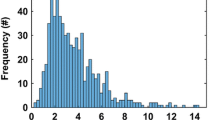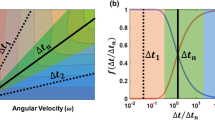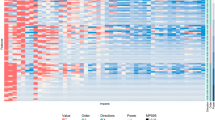Abstract
In a previous study, we found that the relationship between brain strain and kinematic features cannot be described by a generalized linear model across different types of head impacts. In this study, we investigate if such a linear relationship exists when partitioning head impacts using a data-driven approach. We applied the K-means clustering method to partition 3161 impacts from various sources including simulation, college football, mixed martial arts, and car crashes. We found piecewise multivariate linearity between the cumulative strain damage (CSDM; assessed at the threshold of 0.15) and head kinematic features. Compared with the linear regression models without partition and the partition according to the types of head impacts, K-means-based data-driven partition showed significantly higher CSDM regression accuracy, which suggested the presence of piecewise multivariate linearity across types of head impacts. Additionally, we compared the piecewise linearity with the partitions based on individual features used in clustering. We found that the partition with maximum angular acceleration magnitude at 4706 rad/s2 led to the highest piecewise linearity. This study may contribute to an improved method for the rapid prediction of CSDM in the future.





Similar content being viewed by others
References
Beckwith, J. G., R. M. Greenwald, J. J. Chu, J. J. Crisco, S. Rowson, S. M. Duma, S. P. Broglio, T. W. McAllister, K. M. Guskiewicz, and J. P. Mihalik. Timing of concussion diagnosis is related to head impact exposure prior to injury. Med. Sci. Sports Exerc. 45:747, 2013.
Bourdet, N., C. Deck, A. Trog, F. Meyer, V. Noblet, and R. Willinger. Deep learning methods applied to the assessment of brain injury risk. In: Proceedings of International Research Conference on the Biomechanics of Impacts, 2021.
Camarillo, D. B., P. B. Shull, J. Mattson, R. Shultz, and D. Garza. An instrumented mouthguard for measuring linear and angular head impact kinematics in American football. Ann. Biomed. Eng. 41:1939–1949, 2013.
Carlsen, R. W., A. L. Fawzi, Y. Wan, H. Kesari, and C. Franck. A quantitative relationship between rotational head kinematics and brain tissue strain from a 2-D parametric finite element analysis. Brain Multiphys.2:100024, 2021.
Caswell, S. V., A. E. Lincoln, H. Stone, P. Kelshaw, M. Putukian, L. Hepburn, M. Higgins, and N. Cortes. Characterizing verified head impacts in high school girls’ lacrosse. Am. J. Sports Med. 45:3374–3381, 2017.
Cecchi, N. J., A. G. Domel, Y. Liu, E. Rice, R. Lu, X. Zhan, Z. Zhou, S. J. Raymond, S. Sami, and H. Singh. Identifying factors associated with head impact kinematics and brain strain in high school American football via instrumented mouthguards. Ann. Biomed. Eng. 49:2814–2826, 2021.
Cecchi, N. J., D. C. Monroe, G. M. Fote, S. L. Small, and J. W. Hicks. Head impacts sustained by male collegiate water polo athletes. PLoS ONE.14:e0216369, 2019.
Doherty, C. P., E. O’Keefe, E. Wallace, T. Loftus, J. Keaney, J. Kealy, M. M. Humphries, M. G. Molloy, J. F. Meaney, and M. Farrell. Blood–brain barrier dysfunction as a hallmark pathology in chronic traumatic encephalopathy. J. Neuropathol. Exp. Neurol. 75:656–662, 2016.
Fahlstedt, M., F. Abayazid, M. B. Panzer, A. Trotta, W. Zhao, M. Ghajari, M. D. Gilchrist, S. Ji, S. Kleiven, and X. Li. Ranking and rating bicycle helmet safety performance in oblique impacts using eight different brain injury models. Ann. Biomed. Eng. 49:1097–1109, 2021.
Fanton, M., C. Kuo, J. Sganga, F. Hernandez, and D. B. Camarillo. Dependency of head impact rotation on head–neck positioning and soft tissue forces. IEEE Trans. Biomed. Eng. 66:988–999, 2018.
Fanton, M., J. Sganga, and D. B. Camarillo. Vulnerable locations on the head to brain injury and implications for helmet design. J. Biomech. Eng. 2019. https://doi.org/10.1115/1.4044876.
Friedman, J., T. Hastie, and R. Tibshirani. The Elements of Statistical Learning. Springer Series in Statistics. New York: Springer, 2001.
Gabler, L. F., H. Joodaki, J. R. Crandall, and M. B. Panzer. Development of a single-degree-of-freedom mechanical model for predicting strain-based brain injury responses. J. Biomech. Eng. 2018. https://doi.org/10.1115/1.4038357.
Ghazi, K., S. Wu, W. Zhao, and S. Ji. Instantaneous whole-brain strain estimation in dynamic head impact. J. Neurotrauma. 38(8):1023–1035, 2020.
Giudice, J. S., G. Park, K. Kong, A. Bailey, R. Kent, and M. B. Panzer. Development of open-source dummy and impactor models for the assessment of American football helmet finite element models. Ann. Biomed. Eng. 47:464–474, 2019.
Hernandez, F., L. C. Wu, M. C. Yip, K. Laksari, A. R. Hoffman, J. R. Lopez, G. A. Grant, S. Kleiven, and D. B. Camarillo. Six degree-of-freedom measurements of human mild traumatic brain injury. Ann. Biomed. Eng. 43:1918–1934, 2015.
Hoerl, A. E., and R. W. Kennard. Ridge regression: biased estimation for nonorthogonal problems. Technometrics. 12:55–67, 1970.
James, S. L., A. Theadom, R. G. Ellenbogen, M. S. Bannick, W. Montjoy-Venning, L. R. Lucchesi, N. Abbasi, R. Abdulkader, H. N. Abraha, and J. C. Adsuar. Global, regional, and national burden of traumatic brain injury and spinal cord injury, 1990–2016: a systematic analysis for the Global Burden of Disease Study 2016. Lancet Neurol. 18:56–87, 2019.
Kleiven, S. Predictors for Traumatic Brain Injuries Evaluated Through Accident Reconstructions. SAE Technical Paper, 2007.
Kuo, C., M. Fanton, L. Wu, and D. Camarillo. Spinal constraint modulates head instantaneous center of rotation and dictates head angular motion. J. Biomech. 76:220–228, 2018.
Laksari, K., M. Fanton, L. C. Wu, T. H. Nguyen, M. Kurt, C. Giordano, E. Kelly, E. O’Keeffe, E. Wallace, and C. Doherty. Multi-directional dynamic model for traumatic brain injury detection. J. Neurotrauma. 37:982–993, 2020.
Li, X., Z. Zhou, and S. Kleiven. An anatomically detailed and personalizable head injury model: significance of brain and white matter tract morphological variability on strain. Biomech. Model. Mechanobiol. 20:1–29, 2020.
Liu, Y., A. G. Domel, N. J. Cecchi, E. Rice, A. A. Callan, S. J. Raymond, Z. Zhou, X. Zhan, Y. Li, M. M. Zeineh, G. A. Grant, and D. B. Camarillo. Time window of head impact kinematics measurement for calculation of brain strain and strain rate in American football. Ann. Biomed. Eng. 49:2791–2804, 2021.
Liu, Y., A. G. Domel, S. A. Yousefsani, J. Kondic, G. Grant, M. Zeineh, and D. B. Camarillo. Validation and comparison of instrumented mouthguards for measuring previous studies simplified head kinematics and assessing brain deformation in football impacts. Ann. Biomed. Eng. 48:2580–2598, 2020.
Liu, Y., X. Zhan, A. G. Domel, M. Fanton, Z. Zhou, S. J. Raymond, H. V. Alizadeh, N. J. Cecchi, M. Zeineh, and G. Grant. Theoretical and numerical analysis for angular acceleration being determinant of brain strain in mTBI. arXiv preprint (2020). arXiv:2012.13507.
MacQueen, J. Some methods for classification and analysis of multivariate observations. In: Proceedings of the Fifth Berkeley Symposium on Mathematical Statistics and Probability, Oakland, CA, USA, 1967, pp. 281–297.
Montenigro, P. H., M. L. Alosco, B. M. Martin, D. H. Daneshvar, J. Mez, C. E. Chaisson, C. J. Nowinski, R. Au, A. C. McKee, and R. C. Cantu. Cumulative head impact exposure predicts later-life depression, apathy, executive dysfunction, and cognitive impairment in former high school and college football players. J. Neurotrauma. 34:328–340, 2017.
O’Keeffe, E., E. Kelly, Y. Liu, C. Giordano, E. Wallace, M. Hynes, S. Tiernan, A. Meagher, C. Greene, and S. Hughes. Dynamic blood–brain barrier regulation in mild traumatic brain injury. J. Neurotrauma. 37:347–356, 2020.
Ponsford, J., C. Willmott, A. Rothwell, P. Cameron, G. Ayton, R. Nelms, C. Curran, and K. Ng. Impact of early intervention on outcome after mild traumatic brain injury in children. Pediatrics. 108:1297–1303, 2001.
Prins, M., and C. C. Giza. Repeat traumatic brain injury in the developing brain. Int. J. Dev. Neurosci. 30:185–190, 2012.
Sanchez, E. J., L. F. Gabler, A. B. Good, J. R. Funk, J. R. Crandall, and M. B. Panzer. A reanalysis of football impact reconstructions for head kinematics and finite element modeling. Clin. Biomech. 64:82–89, 2019.
Shi, L., Y. Han, H. Huang, J. Davidsson, and R. Thomson. Evaluation of injury thresholds for predicting severe head injuries in vulnerable road users resulting from ground impact via detailed accident reconstructions. Biomech. Model. Mechanobiol. 19:1845–1863, 2020.
Shlosberg, D., M. Benifla, D. Kaufer, and A. Friedman. Blood–brain barrier breakdown as a therapeutic target in traumatic brain injury. Nat. Rev. Neurol. 6:393, 2010.
Somers, J. T., B. Granderson, J. W. Melvin, A. Tabiei, C. Lawrence, A. Feiveson, M. Gernhardt, R. Ploutz-Snyder, and J. Patalak. Development of head injury assessment reference values based on NASA injury modeling. Stapp Car Crash J. 55:49, 2011.
Takahashi, Y., and T. Yanaoka. A study of injury criteria for brain injuries in traffic accidents. In: 25th International Technical Conference on the Enhanced Safety of Vehicles (ESV). National Highway Traffic Safety Administration, 2017.
Takhounts, E. G., S. A. Ridella, V. Hasija, R. E. Tannous, J. Q. Campbell, D. Malone, K. Danelson, J. Stitzel, S. Rowson, and S. Duma. Investigation of Traumatic Brain Injuries Using the Next Generation of Simulated Injury Monitor (SIMon) Finite Element Head Model. SAE Technical Paper, 2008.
Taylor, C. A., J. M. Bell, M. J. Breiding, and L. Xu. Traumatic brain injury-related emergency department visits, hospitalizations, and deaths—United States, 2007 and 2013. MMWR Surveill. Summ. 66:1, 2017.
Tiernan, S., A. Meagher, D. O’Sullivan, E. O’Keeffe, E. Kelly, E. Wallace, C. P. Doherty, M. Campbell, Y. Liu, and A. G. Domel. Concussion and the severity of head impacts in mixed martial arts. Proc. Inst. Mech. Eng. H. 2020. https://doi.org/10.1177/0954411920947850.
Versace, J. A Review of the Severity Index. SAE Technical Paper, 1971.
Wallace, T., and J. Morris. Development and testing of a technology enhanced intervention to support emotion regulation in military mTBI with PTSD. Arch. Phys. Med. Rehabil.100:e5, 2019.
Wilcox, B. J., J. T. Machan, J. G. Beckwith, R. M. Greenwald, E. Burmeister, and J. J. Crisco. Head-impact mechanisms in men’s and women’s collegiate ice hockey. J. Athl. Train. 49:514–520, 2014.
Wu, S., W. Zhao, K. Ghazi, and S. Ji. Convolutional neural network for efficient estimation of regional brain strains. Sci. Rep. 9:1–11, 2019.
Wu, S., W. Zhao, and S. Ji. Real-time dynamic simulation for highly accurate spatiotemporal brain deformation from impact. Comput. Methods Appl. Mech. Eng.394:114913, 2022.
Zhan, X., Y. Li, Y. Liu, N. J. Cecchi, S. J. Raymond, Z. Zhou, H. V. Alizadeh, J. Ruan, S. Barbat, and S. Tiernan. Classification of head impacts based on the spectral density of measurable kinematics. arXiv preprint (2021). arXiv:2104.09082.
Zhan, X., Y. Li, Y. Liu, A. G. Domel, H. V. Alizadeh, S. J. Raymond, J. Ruan, S. Barbat, S. Tiernan, and O. Gevaert. The relationship between brain injury criteria and brain strain across different types of head impacts can be different. J. R. Soc. Interface. 18:20210260, 2021.
Zhan, X., Y. Li, Y. Liu, A. G. Domel, H. V. Alizadeh, Z. Zhou, N. J. Cecchi, S. J. Raymond, S. Tiernan, J. Ruan, S. Barbat, O. Gevaert, M. M. Zeineh, G. A. Grant, and D. B. Camarillo. Predictive factors of kinematics in traumatic brain injury from head impacts based on statistical interpretation. Ann. Biomed. Eng. 49:2901–2913, 2021.
Zhan, X., Y. Liu, N. J. Cecchi, O. Gevaert, M. Zeineh, G. Grant, and D. B. Camarillo. Find the spatial co-variation of brain deformation with principal component analysis. IEEE Trans. Biomed. Eng. 2022. https://doi.org/10.1109/tbme.2022.3163230.
Zhan, X., Y. Liu, S. J. Raymond, H. V. Alizadeh, A. Domel, O. Gevaert, M. Zeineh, G. Grant, and D. B. Camarillo. Rapid estimation of entire brain strain using deep learning models. IEEE Trans. Biomed. Eng. 68(11):3424–3434, 2021.
Zhao, W., and S. Ji. Brain strain uncertainty due to shape variation in and simplification of head angular velocity profiles. Biomech. Model. Mechanobiol. 16:449–461, 2017.
Acknowledgments
This research was supported by the Pac-12 Conference’s Student-Athlete Health and Well-Being Initiative, the National Institutes of Health (R24NS098518), Taube Stanford Children’s Concussion Initiative and Stanford Department of Bioengineering.
Author Contributions
XZ, YL and YuL conceived this study, XZ and YL did the experiment and analyzed the data, YL, DC supervised this study, XZ, YL and YL wrote the manuscript, OG, MZ and GG revised the manuscript.
Conflict of interest
The authors declare no competing interests.
Author information
Authors and Affiliations
Corresponding author
Additional information
Associate Editor Stefan M. Duma oversaw the review of this article.
Publisher's Note
Springer Nature remains neutral with regard to jurisdictional claims in published maps and institutional affiliations.
Supplementary Information
Below is the link to the electronic supplementary material.
10439_2022_3020_MOESM1_ESM.pdf
Supplementary file1 (PDF 836 kb) Figure S1 The CSDM regression RMSE with ridge regression and different methods on four different types of head impacts. The CSDM regression RMSE on the simulated impacts (dataset HM, a); on-field test impacts originated from dataset CF (b); dataset MMA (c), and dataset NASCAR (d). Kmeans-1/2/3: the K-means clustering method with the first/second/third critical feature: the maximum resultant angular acceleration, the maximum angular acceleration along the z-axis, the maximum linear acceleration along the y-axis. Figure S2 The CSDM regression \({R}^{2}\) with ridge regression and different methods on four different types of head impacts with different numbers of clusters. The CSDM regression \({R}^{2}\) on the simulated impacts (dataset HM, a); on-field test impacts originated from dataset CF (b); dataset MMA (c); and dataset NASCAR (d). Kmeans2/3/4: the number of clusters equals 2/3/4. It should be noted that the results here are based on clustering on all kinematic features. Figure S3 The averaged CSDM regression \({R}^{2}\) with ridge regression and different methods across four different types of head impacts with different numbers of clusters. Kmeans2/3/4: the number of clusters equals 2/3/4. It should be noted that the results here are based on clustering on all kinematic features
Rights and permissions
Springer Nature or its licensor holds exclusive rights to this article under a publishing agreement with the author(s) or other rightsholder(s); author self-archiving of the accepted manuscript version of this article is solely governed by the terms of such publishing agreement and applicable law.
About this article
Cite this article
Zhan, X., Li, Y., Liu, Y. et al. Piecewise Multivariate Linearity Between Kinematic Features and Cumulative Strain Damage Measure (CSDM) Across Different Types of Head Impacts. Ann Biomed Eng 50, 1596–1607 (2022). https://doi.org/10.1007/s10439-022-03020-0
Received:
Accepted:
Published:
Issue Date:
DOI: https://doi.org/10.1007/s10439-022-03020-0




